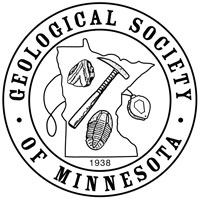Seminar Lab Date:
Seminar Lab presenter:
Seminar Lab Subject:
Seminar Lab Location :
CANCELLED due to COVID-19.
Seminar Lab Details:
Summary:
The southwestern coast of Norway displays a sharp, asymmetric ‘Great Escarpment’ which mimics landforms commonly associated with fault-controlled ‘footwall uplift’ mountain ranges. This landscape signature brings into question whether climate-driven erosion and consequent mass redistribution can generate kilometer scale topographic relief, or if tectonic forces are required instead. The Surna valley (Surnadalen) of mid-southern Norway is a SW-NE striking wide, alluvial, U-shaped valley whose SW margin defines part of the Great Escarpment. Surnadalen displays clear morphometric asymmetry: its inland (SE) side is defined by high elevation (>1000 m) and well-developed drainage networks that display clear evidence of alpine glacial carving, while its seaward side is lower (~500 m) and has neither developed drainage networks nor evidence for valley glaciers. Inland drainages display a distinct set of aligned knickzones that maintain characteristics inconsistent with transient fluvial response to deglaciation. Incision occurs across fluvial process zones with no correlation to drainage area, suggesting regional forcing rather than catchment-scale drivers. Both lithology and structure are nearly identical across greater Surnadalen, and no change in rock type or erodibility correlate with the incision zones. Incision is axially asymmetric: All knickzones occur at the base of the ‘Great Escarpment,’ and the Tjellefonna Fault Zone (TFZ), a strand of a regionally important fault complex, projects into Surnadalen’s axis and aligns directly with the knickzone trace. The depth of incision decays from SW to NE in the direction of propagation of the TFZ tip at a mathematically predictable rate. We interpret the knickzone alignment to reflect active normal fault control over incision localization and depth. The depth and morphology of incision suggests Surnadal’s incision survived multiple glacial cycles. This interpretation implies that Norway’s ancestral structural template continues to impose a fundamental control over the creation and maintenance of the Great Escarpment. Although fault reactivation is not the result of regional tectonic extension, but rather is likely the product of erosion-induced shifting of loads, the pre-existing margin architecture appears to dominate the isostatic response to erosion.
Biography:
Dr. Jeni McDermott, originally from California, received her M.S. in hydrogeology from the University of California, Santa Barbara, and her Ph.D. in geology at Arizona State University. She taught geology for two years at Colgate University in upstate New York before beginning at the University of St Thomas in 2013. Jeni’s research interests lie in understanding how fluvial systems interact with and shape our world, both at the orogen scale through the interplay between surface processes, deformation, and tectonics, as well as at a smaller scale where surface water and groundwater dynamically interact with our human environment.
